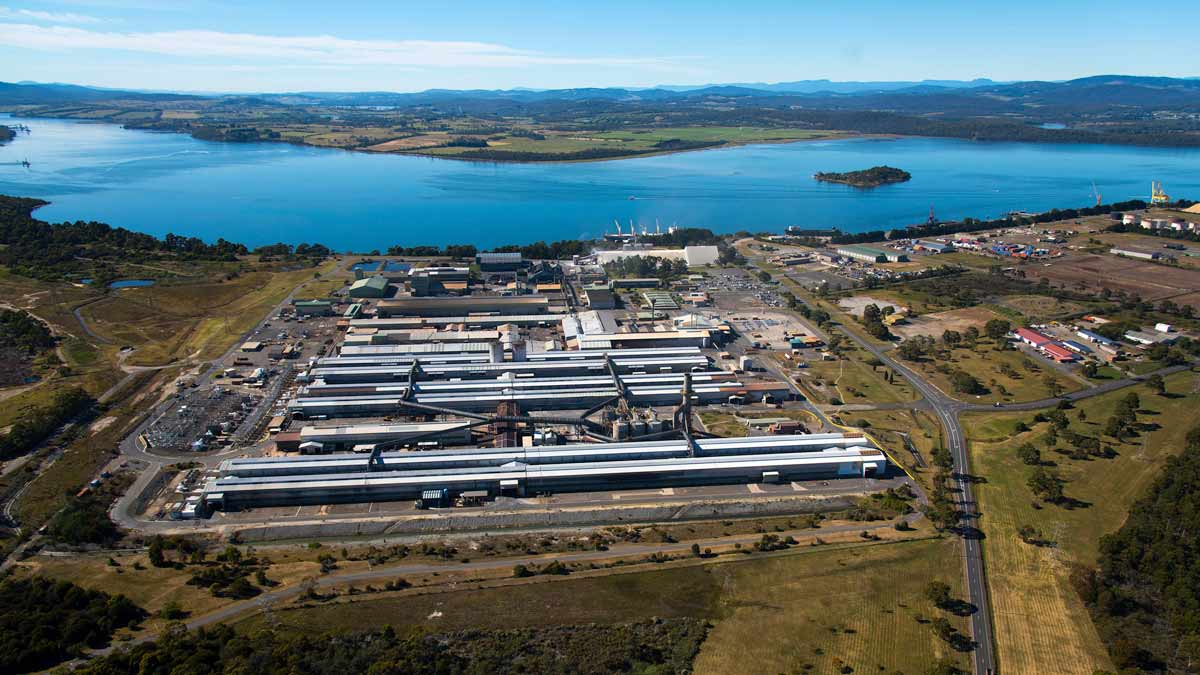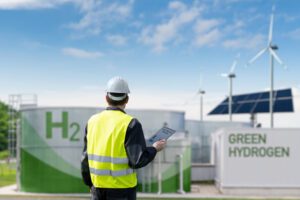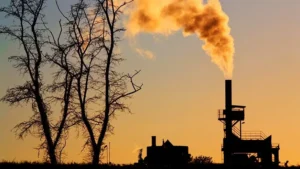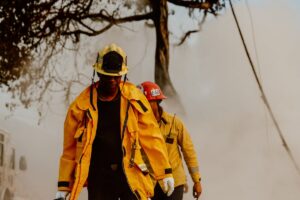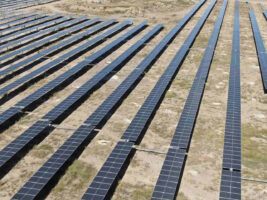The Albanese government says development of one of Australia’s greatest green hydrogen hopes, the Bell Bay hub in northern Tasmania, will kick off this year, with the help of $300 million in commonwealth and state funding – $70 million of it from federal Labor.
Federal energy minister Chris Bowen announced his government’s contribution to the hydrogen hub on Thursday, as part of an agreement struck with the Tasmania Liberal government.
Bowen says the new investment from the two governments will be in “Common User Infrastructure,” or those things necessary to create a hydrogen hub, such as hydrogen storage, transport and export infrastructure.
“What I’m particularly excited about in this in this hydrogen hub is the opportunity for using green hydrogen for decarbonising maritime transport,” he told a press conference in Bell Bay.
“You know, if maritime transport of shipping was a country, it would be the seventh biggest emitter in the world. And it’s one of the hardest nuts to crack when it comes to finding ways of reducing emissions around the world.”
Tasmania’s energy minister Nick Duigan says the plan, from here, is to speak with proponents interested in setting up in Bell Bay and to secure “anchor tenants” for the hub site.
The project will be delivered by a consortium of partners, including TasPorts, TasNetworks, TasWater, TasIrrigation and the Bell Bay Advanced Manufacturing Zone.
Bowen says it will be operational by 2028 and produce 45,000 tonnes of renewable hydrogen a year.
“Investing in an Australian renewable hydrogen industry is investing in Australia’s future to become a renewable energy superpower,” Bowen said on Thursday.
“Bell Bay is a production and export powerhouse, backed by 100% renewable electricity, and this hub will provide jobs, support new manufacturing and spur investment in regional Australia as the world decarbonises.”
Bell Bay, an industrial precinct that hosts an aluminium smelter owned by Rio Tinto, has long been the focus of Tasmanian government renewable hydrogen production and export plans, thanks to its location next to a deep water port and its access to the state’s majority renewables electricity supply.
“No other jurisdiction in this country is ever going to get to where we are, that is to have 100 per cent renewables. So in terms of hydrogen, we have very lofty ambitions in terms of ensuring that we can develop green hydrogen here in this precinct at Bell Bay,” said former premier Gutwein in early 2022.
Bell Bay has also been on the radar of a number of major corporations with growing green hydrogen ambitions, including at one time or another Fortescue, Woodside and Origin.
In December 2022, Spanish energy giant Iberdrola agreed to work jointly with Abel Energy to re-develop the decommissioned Bell Bay Power Station into a world-scale, $1.7 billion green hydrogen and methanol production plant, with initial output set for 2026.
But despite all the corporate interest, government enthusiasm, and signing of MoUs, actual progress at Bell Bay has been slow – slow enough to get a special mention in the latest global renewables report from the International Energy Agency.
As RenewEconomy reported last week, a global lag renewable hydrogen project development was a key theme of the IEA report, with just 3% of the 360GW of renewable electrolyser projects with announced start dates before 2030 reaching financial close or starting construction in 2023.
“Some of the planned projects in the Renewables 2022 forecast have had no updates over the last year or have been cancelled completely,” the report said.
The report goes on to single out “uncertainty in Australia over the future of stalled projects” for its less optimistic forecast for renewable hydrogen progress in Asia-Pacific in 2024. Tasmania also got a mention.
“One project’s environmental permit had lapsed before it reached financial close, and plans for projects in Bell Bay have been put on hold due to high water and transmission congestion.”
Indeed, despite a huge head start from its hydropower resource, Tasmania’s green hydrogen success hinges on the island state’s plans to oversize its renewables generation fleet – mostly with huge new wind farms – and to upgrade its transmission network accordingly.
And, like the rest of Australia, Tasmania is discovering that making major grid upgrades – and building major new wind farms – is a slow and complicated process, and one that test the bounds of social licence and state budgets.
In November, a change of plans on crucial grid upgrades in the state was slammed by the opposition Labor party as a disaster for renewable energy developers in the state, leaving “at least six wind farms” without connections to the grid and placing more than $10 billion worth of investment, including in renewable hydrogen, at risk.
The change of transmission plans was in turn part of the fallout from the Marinus Link decision to build just one new sub-sea electricity transmission links across the Bass Strait to Victoria, instead of two, after the Tasmanian Liberal government raised concerns about a blow-out in costs.
This week, however, it’s all about optimism and action again, with Tasmania’s minister Duigan describing the new progress on Bell Bay as a huge step towards a major new industry.
“Northern Tasmania is set to be the new home of renewable energy generation, using projects like this to attract huge investments in renewable hydrogen for use in Australia and supply to the world,” Duigan said.
“Bell Bay is perfectly placed to be a world-class green hydrogen hub, with its established port infrastructure and highly experienced and skilled workforce.”
All up, the Bell Bay Hydrogen Hub is expected to produce of up to 45,000 tonnes of green hydrogen per year, support 740 jobs for energy specialists including engineers and technicians,and support the manufacture of green metals and alloys like iron, aluminium and steel.
The progress on Bell Bay was also welcomed on Thursday by the World Wide Fund for Nature – Australia, which said it has been calling for coordinated investment like this since 2019.
“Governments around the world are investing billions to unlock potentially trillions of private sector investments to accelerate our transition to clean, reliable, renewable energy,” said Dermot O’Gorman, WWF-Australia CEO.
“This is a great national example of Australia stepping up too.
“It’s now essential that other industrial centres, with their manufacturing history, skills, and infrastructure, are also supported to become renewable energy industrial precincts.
“These places were the backbone of our economy for decades and we need to ensure they are ‘repowered’ to continue to prosper in a renewable energy-powered future.
“With the right renewables projects in the right locations across our nation, we can build a future that benefits our environment, communities and the economy.”

